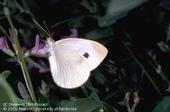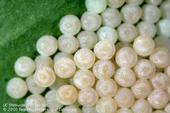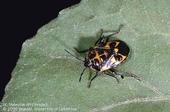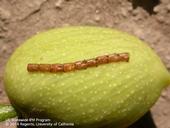
If you've been in suspense all week, wait no longer. Here are the answers to this year's Easter egg hunt!
Let us know how you did in the comments below. And be sure to follow us on Facebook, Twitter, and Instagram!
1. Brown Garden Snail
The brown garden snail, Cornu aspersum, is the most common garden snail in California. Snails and slugs feed on a wide variety of plants, creating irregular holes by scraping with their tongues. A combination strategies including...

It's time for our second annual Easter Egg hunt!
Can you guess which pests laid the eggs pictured below? These pests may already be hiding in your backyard or garden. Leave a comment with your guesses. Answers will be posted at the end of the week!
Pest Eggs

Yesterday we posted an “Easter egg hunt” challenge, and as promised, here are the adult insects and spiders with their matching eggs or egg cases pictured. How did you do?
We welcome your feedback, so please sign in and post a comment below to tell us if the egg hunt was easy or difficult, and how many answers you guessed correctly. Or, you can write us a note about the challenge on our UC IPM Urban/Community Facebook page.
Now for the answers:
A. Harlequin bugs are...

Easter often brings to mind colorful eggs hiding in the landscape for children to find. At UC IPM, we thought you'd want to know about eggs already hiding in your yard: insect and spider eggs!
Many insects and spiders have strangely shaped and colorful eggs that you may have never noticed. Below are some photos of these interesting eggs and our own version of a spring time egg hunt.
We challenge you to guess which adult insect or spider belongs to the following eggs and egg cases. Some are beneficials, while others might be pests. Extra “points” awarded for being able to know the difference! Answers will be posted on Tuesday afternoon. Good luck!
Insect and Spider Eggs and Egg...
![Desert cottontail rabbit. [R. O'Connell.]](https://ucanr.edu/blogs/UCIPMurbanpests/blogfiles/35348small.jpg)
Every spring, we see pictures and artwork of adorable Easter bunnies-- cute, little rabbits that deliver gifts of chocolate and other goodies to our children.
However, while “bunny rabbits” are cute, rabbits can also be very destructive pests year-round in the garden and landscape. This is especially true if your home is near wild or uncultivated lands, parks, or greenbelts. These places provide resting and hiding cover during the day for rabbits.
Rabbits can damage ornamental plants, vegetable plants, herbs, trees, and berry crops. They also gnaw and cut plastic irrigation lines, especially small diameter tubes.
There are eight species of rabbits found in California. Three of them are widespread and...


